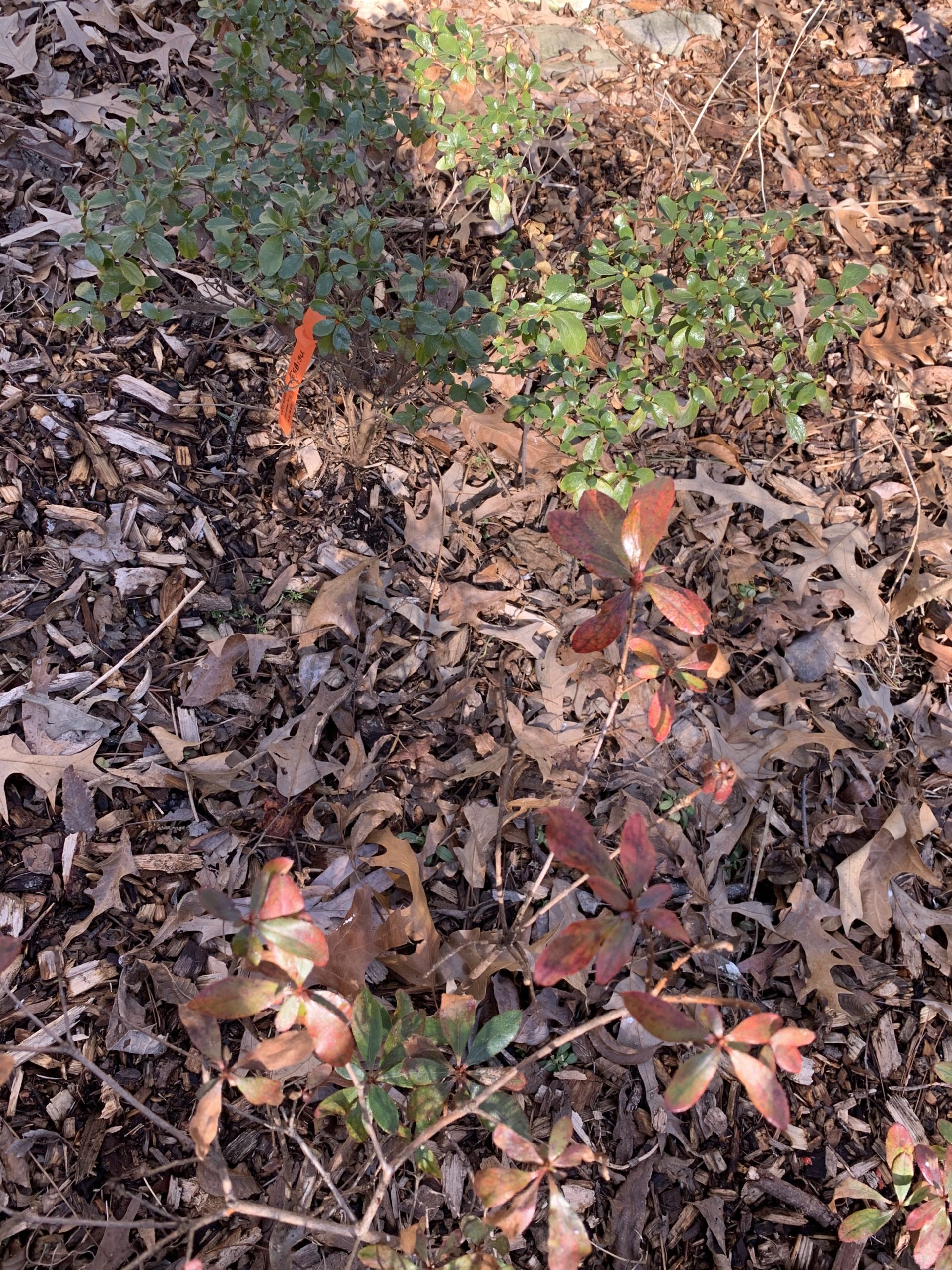Gardening for Health

Checking In on Azaleas
By Maria Price
Now is a good time to walk around your garden and see how your azaleas are doing, if you have them. There are deciduous azaleas that lose their leaves during the winter, such as the Exbury, the Northern Lights series, flame and PJM cultivars. They will bloom in the spring with flowers but will not produce leaves until the flowers finish. Nearly all the other azalea cultivars grown in the Baltimore-Washington, D.C. area are evergreen.
If you look at your azaleas now and notice that most of the leaves that were there earlier have fallen off, then you can be assured that your plants are hungry for nitrogen. Especially if you notice yellowing and red leaves developing at the bottom of the past season’s new growth. If the only leaves remaining are the ones attached near the top of each branch just below the flower buds, your plants are hungry.
Spring flowering plants only stop growing when the temperatures are below freezing. Above freezing, the buds are expanding and in need of nutrients. So, if you had used compost or fertilizer such as 10-6-4, ammonium nitrate, ammonium sulfate or Holly-tone, after the first frost in late fall, your azaleas would be covered in leaves. The flower buds that were initiated last August are expanding by developing their petals and sex organs. Nutrients are needed in the soil for this to occur.
Most ornamental plants require a lot more nitrogen and potassium than phosphorus. During fall and winter, most of the previous season’s nitrogen has been used up or is unavailable. Nitrogen is also very soluble and easily leaches out of the soil. Most people mulch their azaleas with bark that is deficient in nutrients until it is completely broken down. If your soil is less than 5 percent organic matter, it has little to no nutrient reserves to feed the roots during fall and winter. Insufficient nitrogen for the roots means insufficient nutrients for the developing flower buds.
There must be a reallocation of nutrients for the buds to develop. When the temperatures are above 35 degrees and there is inadequate available nitrogen in the soil, nitrogen is translocated from the older leaves into the developing buds. This results in the lower leaves turning yellow or red and eventually falling off.
This defoliation of evergreen azaleas can be prevented by simply fertilizing your azaleas in the fall and early winter after the first frost. A 50 percent organic fertilizer such as 10-6-4 or ammonium sulfate applied at the rate of 1 cup for every 3 feet in height or spread will help prevent leaf loss. Female hollies can also be treated this way.
